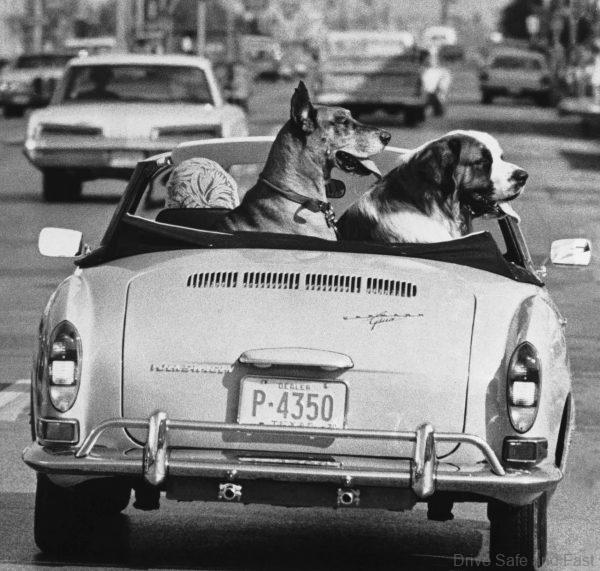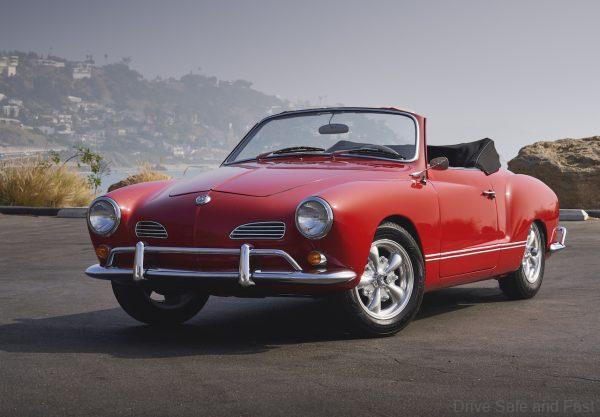Using the chassis and the mechanicals of the Type 1 Volkswagen Beetle from 1938 this curvaceous little air-cooled car celebrates its 65th birthday this year. Sixty-five years ago, the first Karmann Ghia rolled off the assembly line at the Osnabruck factory.
The brainchild of Wilhelm Karmann, a contract car manufacturer, the Ghia combined German engineering, as it was built on the chassis of the Volkswagen Beetle, with Italian design signed by Carrozzeria Ghia.
The coachbuilder created a concept that Karmann showed to Heinrich Nordhoff, Volkswagen’s Managing Director at the time, and the two decided to put it into production in August 1955, one month after its official reveal.
Despite the sports car design, it delivered just 34 horsepower at 3600rpm from the 1.2 cubic capacity Flat-4 engine and it was some 68 kg heavier than the Beetle. Still it could reach 120km/h which was decent for its time.

Despite its heft this first generation Karmann Ghia was fun to drive, with changes to the suspension that included a front sway bar and different springs compared to the Beetle. It also sat 7 inches (18 cm) closer to the ground.
As the years passed the Karmanm Ghia was improved with better engines, handling and of course cabin features. Its production ended in 1974 with Porsche introducing the 914. Today a decent Karmann Ghia sells for between RM80,000 to a lofty RM150,000 for a fully restored almost showroom looking unit.
We vaguely remember an uncle of ours in Johor Bahru driving a new unit when we were very young and another relative driving their Karmann Ghia in Ipoh. The cars are long gone now and we wonder what happened to them.






PRESS RELEASE: Volkswagen Karmann Ghia Birthday
Turin design on a Beetle base
At the start of the 1950s, Wilhelm Karmann, head of the car manufacturer of Osnabrück, dreamt of an open-top spider on the basis of the Volkswagen Beetle. In the spring of 1953, he commissioned his friend Luigi Segre, owner of Carrozzeria Ghia in Turin, to design a convertible sports car. That October, Karmann inspected the result in a garage in Paris, and was delighted – although what he saw was actually a closed coupé. The elegant prototype also impressed Volkswagen’s Managing Director at the time, Heinrich Nordhoff, and the decision was taken to develop a production model of a 2+2 coupé.
This car saw Karmann combine the reliable technology of the Volkswagen Beetle with a body full of Italian elegance. A larger front seating area, two beautiful round dials, and a top speed of 116 km/h gave the car a look that radiated driving pleasure. After minor changes to the bodywork – including the addition of those characteristic air vents in the front of the car – the fully-developed coupé was presented to the media on 14 July 1955 at the Casino Hotel in Georgsmarienhütte. The new, elegant Karmann Ghia Coupé (Type 14), based on the Volkswagen Type 1, was an immediate hit there, just as it was at the car’s official launch at the IAA in September 1955.
Production started in August 1955, and what followed was an unparalleled success story: the Volkswagen Karmann Ghia won the hearts of men and women all over the world.

Open-top dream: Karmann Ghia Type 14 Cabriolet
Two years later, in November 1957, the Volkswagen Karmann Ghia Type 14 Cabriolet began rolling off the assembly line. “The dream car for fastidious motorists who love to drive fast, even with the roof down,” claimed the sales brochure in 1958. The convertible top set benchmarks in terms of workmanship, material and low noise.
Production draws to an end after almost two decades
After 19 successful years and the production of 362,601 coupés and 80,881 convertible Karmann Ghia Type 14, the elegant model from Osnabrück went into retirement in 1974. Volkswagen heralded a new era: the Scirocco was ready to take its place.

Today, Karmann Ghias are collectors’ items and crowd-pleasers at any car show. Their easy parts availability and graceful lines have made them among the more valuable Volkswagen classics. And the idea of taking a basic platform and modifying it with a unique exterior top-hat is shared with the upcoming ID. electric vehicle family – meaning the electric future could have some of the styling freedom of the past.



